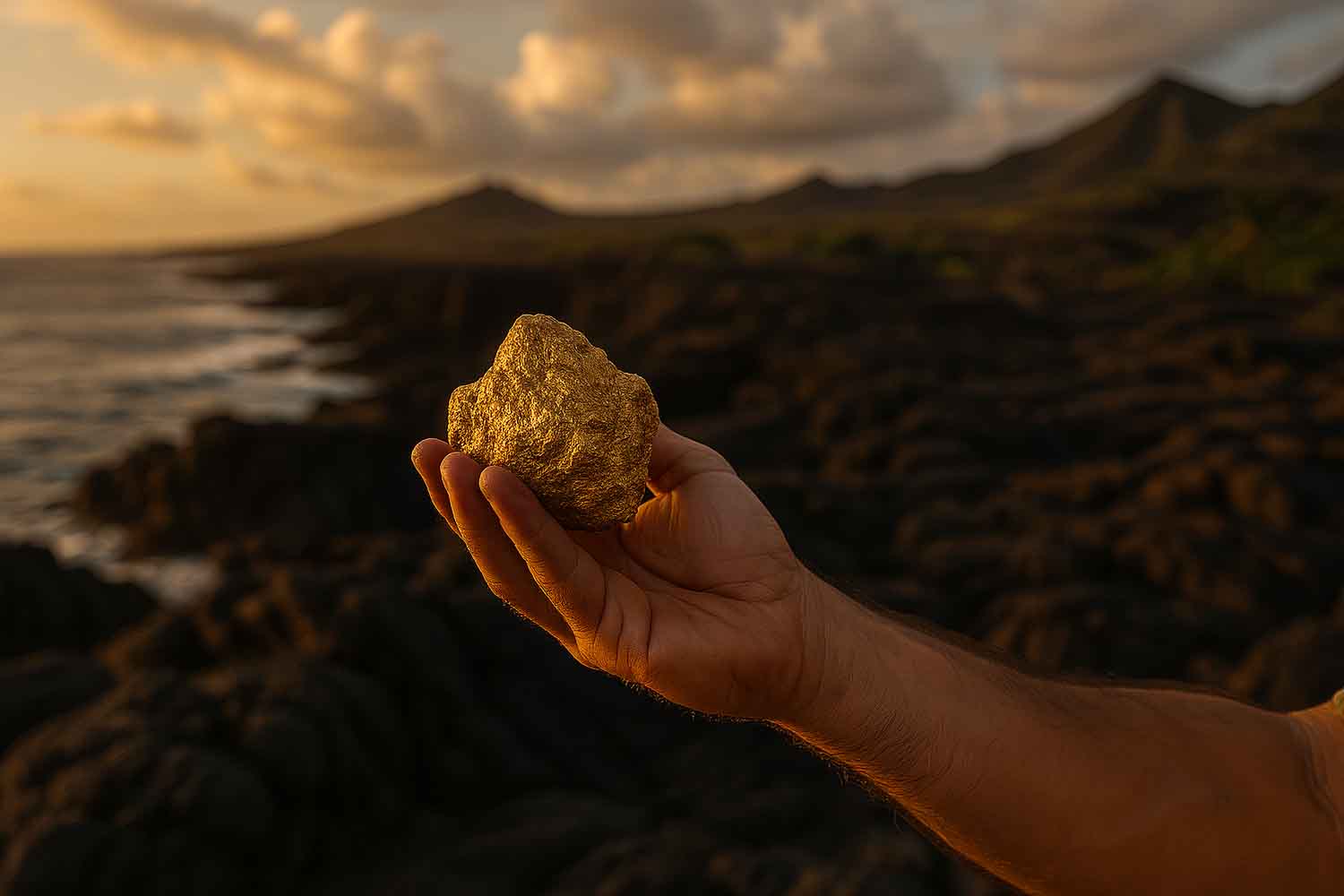A German team discovers traces of deep metals in Hawaiian volcanic rocks: according to researchers, beneath those lands lies an enormous quantity of gold that, if extracted, would change the global economy

There could be a titanic gold mine beneath Hawaii, a reserve so vast that it would surpass, on its own, all the gold ever extracted in human history. This is claimed by a group of researchers from the University of Göttingen, who recently detected traces of ruthenium in Hawaiian volcanic rocks: an element that, at a geological level, is closely connected to the presence of gold. And if the theory were confirmed, it would be one of the most astounding discoveries ever made from a mining, environmental, and even socioeconomic perspective.
Although the apparent protagonist of the discovery is ruthenium, gold is the true element at the center of attention. In fact, gold and ruthenium are not just precious metals: they are also geological siblings, often present in the same mining environments. And this is no coincidence. Both form at great depths and slowly rise through the rocks of Earth’s mantle.
German researchers have identified significant quantities of ruthenium and tungsten in Hawaiian basaltic rocks, materials that shouldn’t be there in such concentration… unless they arrived directly from the planet’s core, where it is presumed that most of Earth’s gold is stored. It’s a staggering finding, because it suggests that beneath the surface of those volcanic islands could hide an enormous gold deposit, still intact, still inaccessible.
One of the key clues is that these rocks don’t just belong to Earth’s crust, but come from deeper zones of the mantle, where the melting of materials has transported, over geological eras, impressive quantities of noble metals.
There’s enough gold in the core to cover the Earth
The data emerging from studies are surprising: according to estimates, 99.99% of our planet’s gold would still be in its core, well below the Earth’s crust. There would be enough gold to cover every inch of Earth’s surface with a layer 18 inches (46 centimeters) thick. But this immense wealth remains, at least for now, purely theoretical.
Extraction, in fact, isn’t even remotely possible with current technologies. It will take millions of years for that gold to slowly rise toward the surface, making itself accessible to humans. And even then, we’ll still have to wait decades between the discovery of the deposit and the start of any extraction operations.
An eloquent example is that of the Bushveld deposit in South Africa, discovered at the end of the 19th century, but exploited concretely only much later. Gold resources, as we know, operate on geological time, not human time. And just as our generation has reaped the fruits of discoveries made millennia ago, this new potential deposit will also, in all probability, be a legacy for those who come after us.
A metal that could lose its value?
If we ever managed to access these deep gold reserves, the world would change radically. Gold, until today a symbol of power, wealth and rarity, could become as common as iron. And then, what would happen to its uses, its value, its symbolic weight?
The availability of gold in industrial quantities could modify global economic balances, create new environmental problems related to extraction, and even alter our cultural relationship with the concept of “precious.”
For now, however, it remains only a remote possibility. A discovery that invites us to reflect on how little we know about our planet, and on how, often, true wealth is not in what we can exploit immediately, but in what we learn to wait for.
